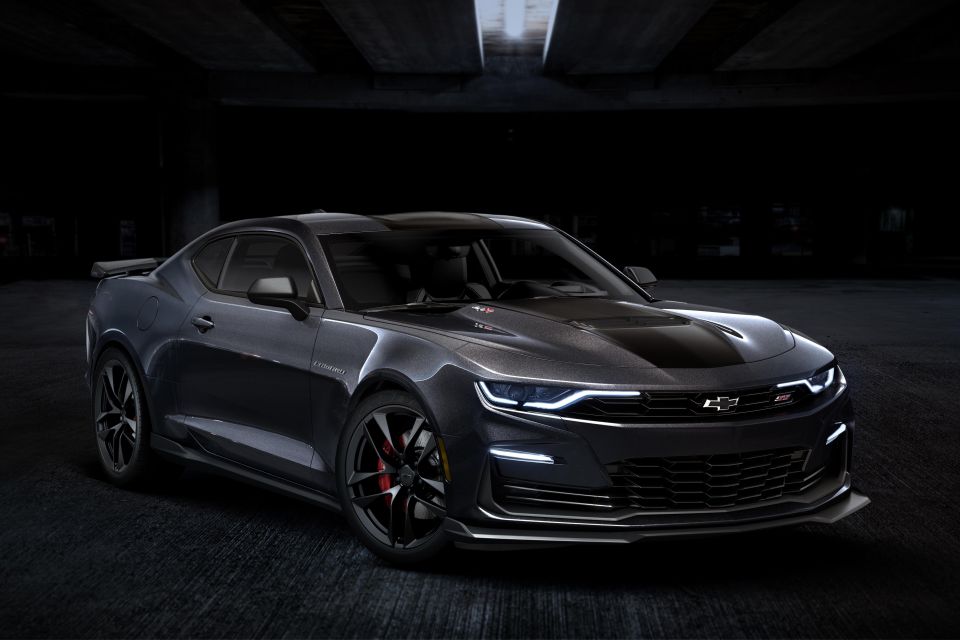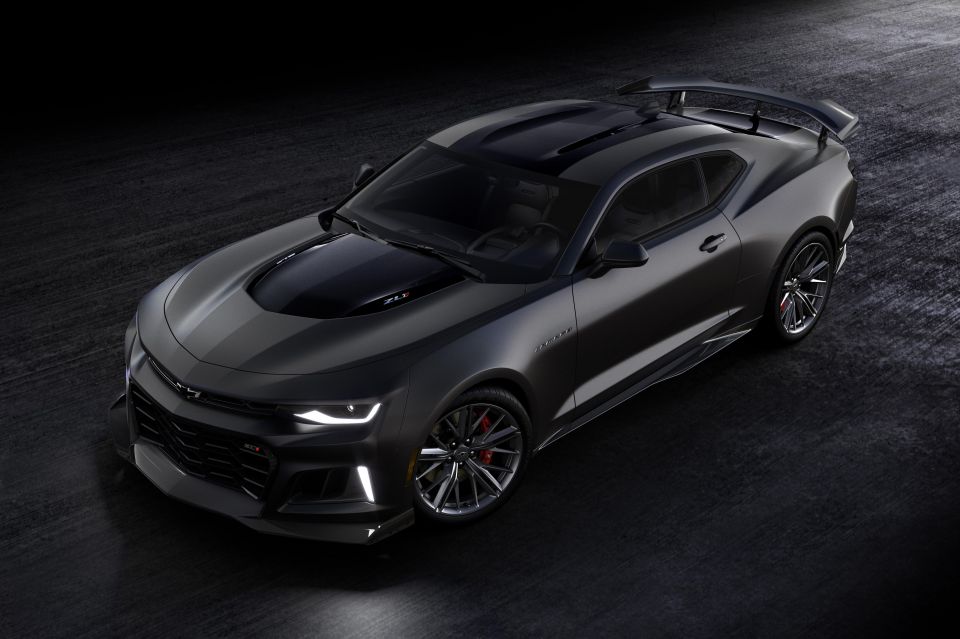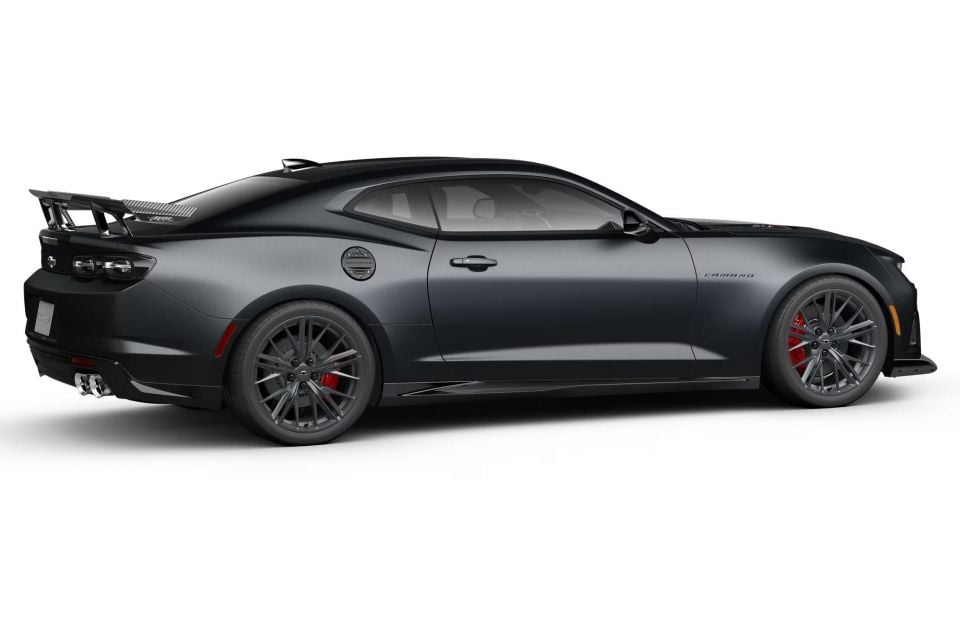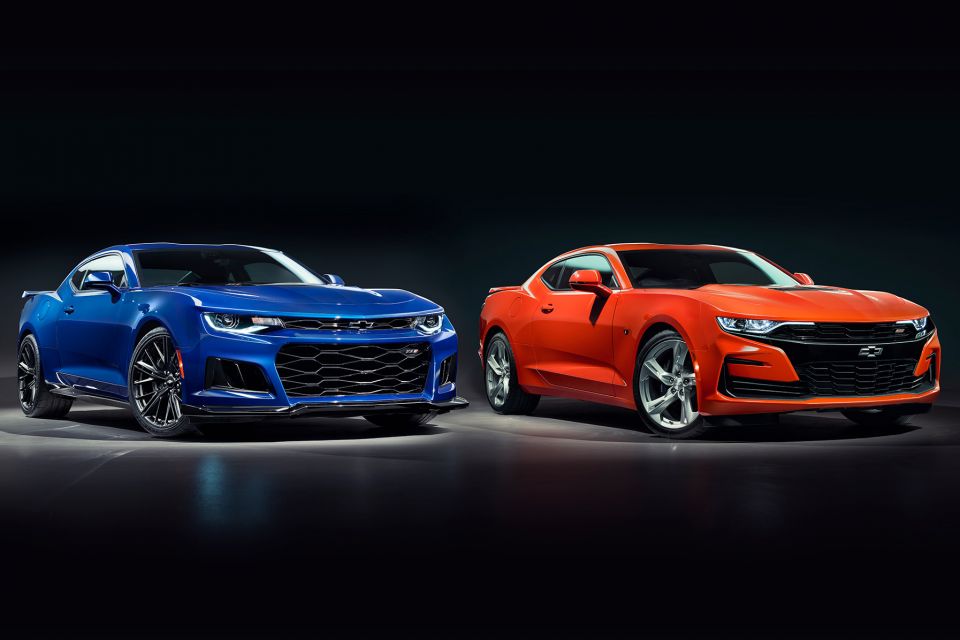

Damion Smy
Boxy new KGM Musso unveiled to take on HiLux and Ranger ahead of Australian launch
7 Hours Ago

News Editor
The Chevrolet Camaro is dead, again.
Motor1 reports word from Chevrolet the last Camaro to roll off the Lansing Grand River production line in Michigan on December 14 was a ZL1 1LE coupe with a manual transmission.
Chevrolet hasn’t confirmed whether this will go to a customer or a museum, and hasn’t released any images of the final vehicle.
Many car brands have marked the occasion of a final vehicle being built by taking photos of the car surrounded by workers, sometimes even with their signatures under the bonnet.

GM has confirmed it’s laying off 369 employees at the Camaro’s plant, which will occur between January 1 and late March.
In a statement to media, GM confirmed it “anticipates having job opportunities for all impacted team members per the provisions of the UAW-GM National Agreement”.
Chevrolet announced in March it would end production of its Ford Mustang rival but promised “this is not the final chapter for nameplate”.
GM Authority reports the deadline for the end of coupe production was extended from December 7 to December 14.

Production of the convertible wrapped up on November 22, while production of models with the turbocharged 2.0-litre four-cylinder engine ended earlier in 2023, leaving only V6- and V8-powered models.
Sales spiked 110 per cent in the second quarter of 2023 in the US compared with the same period last year, as buyers sought to get a Camaro before it was gone.
Chevrolet ended up selling 9557 Camaros in the second quarter, significantly narrowing the gap between it and the Mustang (10,760 sales). It was a strong performance for a vehicle that, in its current generation, has been consistently outsold by the Mustang, as well as the Dodge Challenger.

The brand hasn’t confirmed when the Camaro name will return, or whether it will still be exclusively used on two-door vehicles.
A report at the end of last year claimed GM is considering turning Camaro into a sub-brand with a pair of all-electric three- and five-door crossover coupes, which could later be joined by an EV sports car based on the same architecture as the Corvette EV.
To send off the Camaro, Chevrolet released a Collector’s Edition package across the entire range, from V6-powered coupe and convertible models all the way up to the flagship supercharged V8-powered ZL1.
The Collector’s Edition of the ZL1 features a Panther Black paint job with Chevrolet’s first matte finish, as well as the ZL1 1LE’s front splitter and rear wing.
Just 350 units were produced.

This isn’t the first time the Camaro has been retired. After being produced from 1966 to 2002 across four generations, Chevrolet ended production of the pony car.
It returned in 2009 on the new Zeta platform developed by Holden, which debuted on the VE Commodore.
The current sixth-generation Camaro was launched as a 2016 model, and is based on the Alpha rear-wheel drive also used by Cadillac for its sports sedans.
In its homeland, sales of the Camaro have tapered off dramatically. Since the turn of the decade, it hasn’t managed to crack 30,000 sales, with just 24,652 sold in 2022.

The Camaro’s decline isn’t isolated, though. The Ford Mustang has seen a similar drop, although off a higher base, and only managed to shift 44,332 units last year.
The other member of the pony car triumvirate, the Dodge Challenger, has actually managed to hold steady over the past decade.
Because of the sharp falls registered by its rivals, the Challenger – a larger, more spacious vehicle – actually ended up in first place last year with 55,245 sales.
The Challenger is also exiting production, though a direct replacement has been confirmed for a US launch late in 2024 – but it’ll pack electric power, with a rumoured turbocharged inline-six engine yet to be confirmed by Dodge.

The Camaro was officially sold in Australia between 2018 and 2020, with right-hand drive conversion work done by Walkinshaw for Holden Special Vehicles. Only the coupe was offered locally.
When it was new, the Camaro SS with a 6.2-litre V8 and eight-speed auto had a starting price of almost $86,000 before on-road costs.
That put it at a severe disadvantage to the Ford Mustang, which was factory-produced in right-hand drive.
By comparison, a Mustang with a 5.0-litre V8 and 10-speed auto began at a shade over $66,000 before on-roads. Sales predictably reflected the price discrepancy.
MORE: A look back at the Chevrolet Camaro, the Ford Mustang’s nemesis MORE: This is the Chevrolet Camaro’s final act… for now MORE: Chevrolet Camaro axed, but name will return… some day
Where expert car reviews meet expert car buying – CarExpert gives you trusted advice, personalised service and real savings on your next new car.
William Stopford is an automotive journalist with a passion for mainstream cars, automotive history and overseas auto markets.


Damion Smy
7 Hours Ago


Damion Smy
8 Hours Ago


Damion Smy
10 Hours Ago


Damion Smy
12 Hours Ago


Damion Smy
13 Hours Ago


Damion Smy
14 Hours Ago